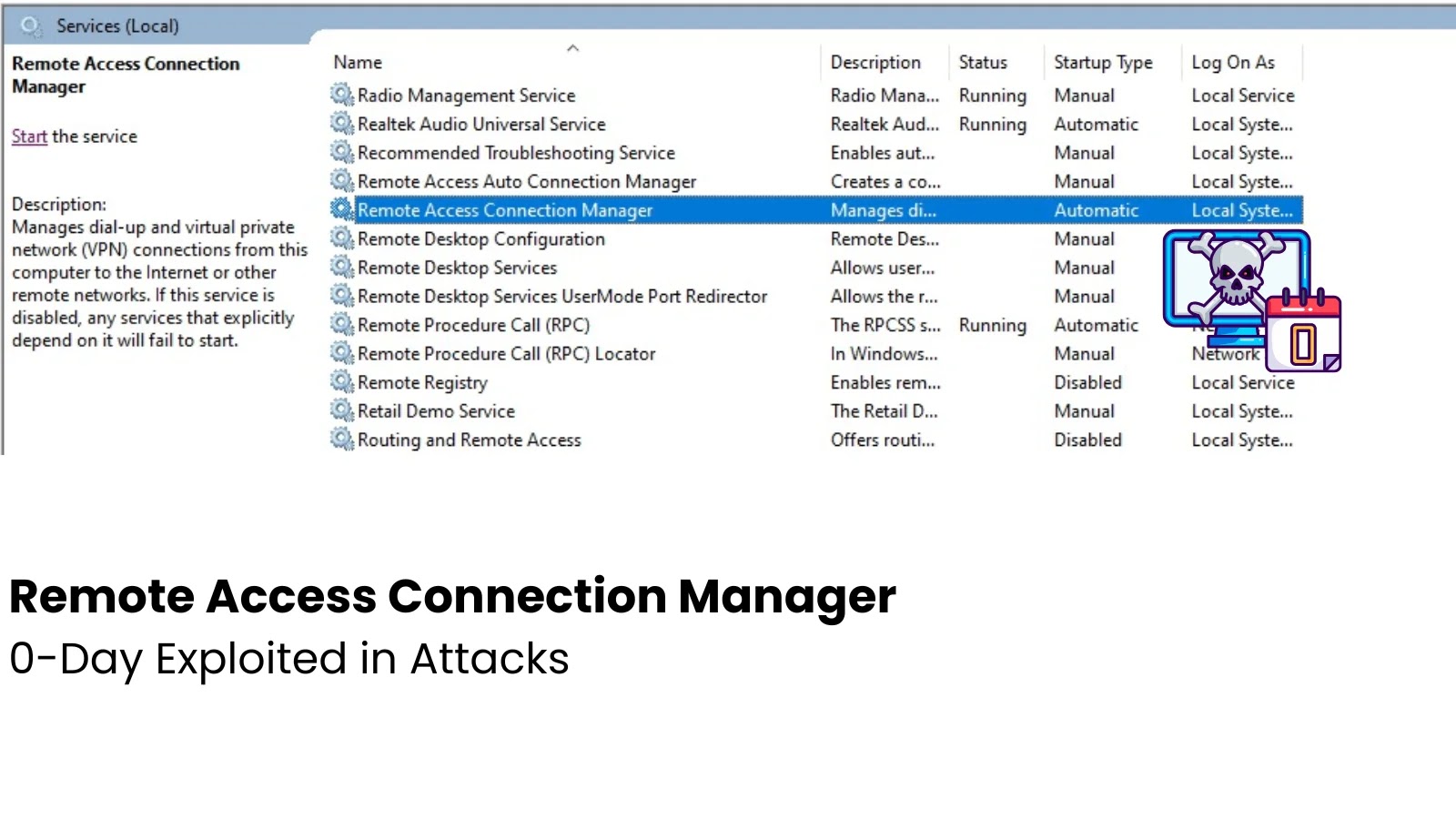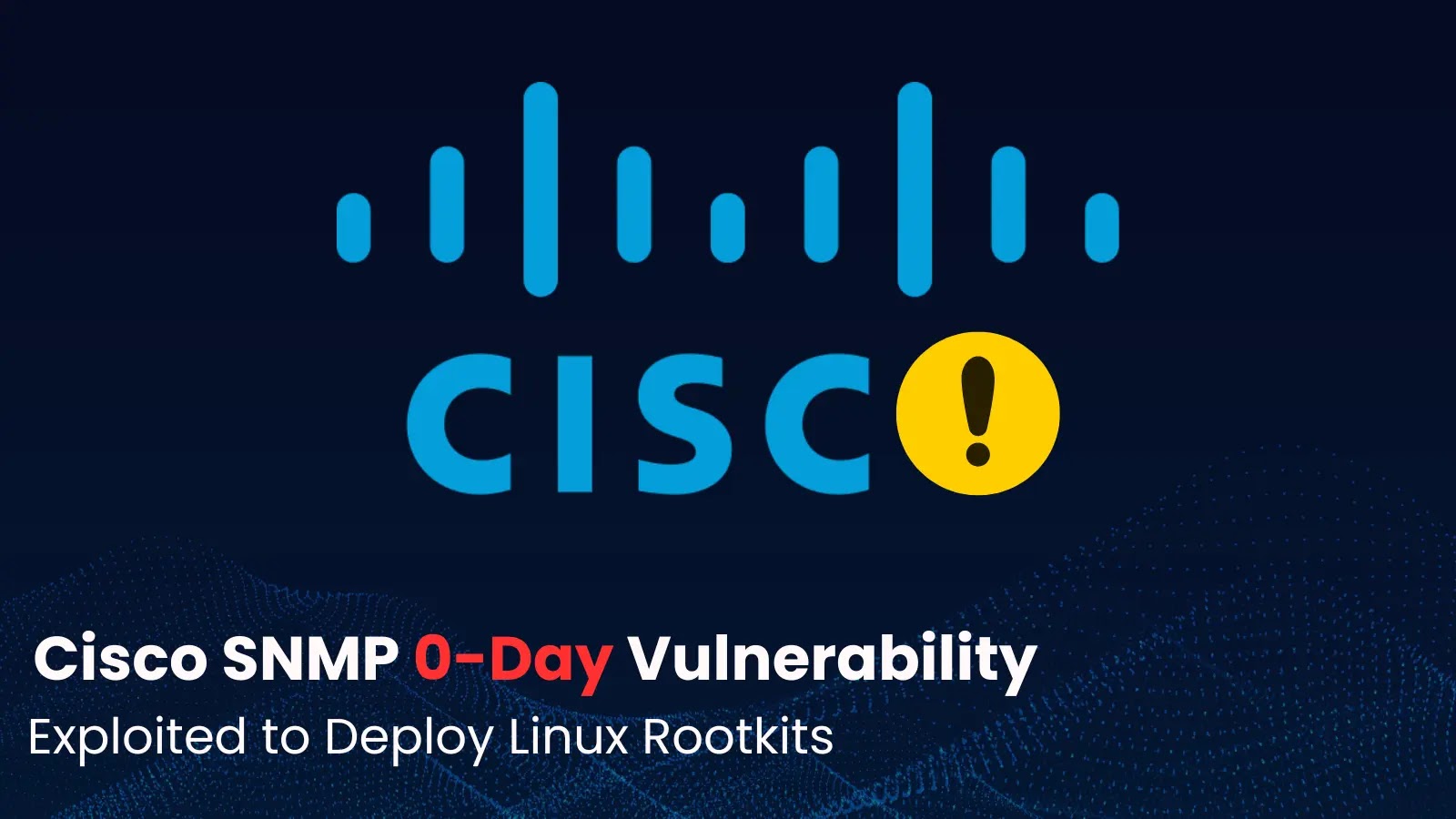Microsoft has recently confirmed the active exploitation of a critical zero-day vulnerability within the Windows Remote Access Connection Manager (RasMan) service. This flaw, identified as CVE-2025-59230, enables attackers to escalate privileges, potentially leading to full system compromise.
Understanding the Vulnerability
CVE-2025-59230 arises from improper access control mechanisms within RasMan, a core Windows component responsible for managing remote access connections such as Virtual Private Networks (VPNs) and dial-up services. This vulnerability allows users with low-level privileges to gain SYSTEM-level access, effectively granting them complete control over the affected system.
Disclosed on October 14, 2025, this security flaw impacts multiple versions of Windows, including Windows 10 (versions 1809 and later), Windows 11, and Windows Server editions from 2019 through 2025. The vulnerability has already attracted the attention of threat actors, particularly those targeting enterprise environments.
Technical Details and Exploitation
The core issue lies in RasMan’s inadequate permission checks, which can be exploited by authorized local attackers to manipulate service configurations and bypass standard privilege boundaries. With a Common Vulnerability Scoring System (CVSS) v3.1 base score of 7.8, this high-severity vulnerability requires only local access and low privileges, making it an attractive target for attackers seeking to escalate privileges post-compromise.
Microsoft has classified this vulnerability as Exploitation Detected, indicating that it is being actively exploited in real-world attacks. However, specific details regarding the affected victims have not been disclosed.
While no public proof-of-concept (PoC) code has been released, security researchers have outlined potential exploitation methods. These include registry manipulation or Dynamic Link Library (DLL) injection into RasMan processes. For example, an attacker could use low-integrity processes to overwrite accessible files in the RasMan directory (e.g., C:\Windows\System32\ras), injecting malicious code that executes with elevated rights upon service restart. Such techniques could be combined with initial access methods like phishing or exploiting unpatched applications, amplifying the potential damage through lateral movement within the network.
Vulnerability Metrics
To facilitate a rapid assessment of CVE-2025-59230, the following table summarizes its key metrics:
| Metric | Value | Description |
|————————————–|——————-|————————————————–|
| CVSS v3.1 Base Score | 7.8 (High) | Overall severity rating |
| Attack Vector | Local (AV:L) | Requires physical or logged-in access |
| Attack Complexity | Low (AC:L) | Straightforward exploitation |
| Privileges Required | Low (PR:L) | Basic user account suffices |
| User Interaction | None (UI:N) | No victim engagement needed |
| Confidentiality/Integrity/Availability Impact | High (C:H/I:H/A:H) | Full system compromise possible |
| Exploit Maturity | Functional (E:F) | Proof-of-exploits exist in the wild |
Mitigation and Recommendations
Given the active exploitation and high severity of this vulnerability, immediate action is imperative. Microsoft has released patches as part of the October 2025 Patch Tuesday updates. Organizations and individual users are strongly urged to apply these updates without delay to mitigate the risk of exploitation.
Unpatched systems are at significant risk, particularly from nation-state actors and ransomware groups known to exploit such vulnerabilities for malicious purposes. In addition to applying patches, it is advisable to monitor systems for unusual activity, restrict access to critical services, and educate users about potential phishing attempts that could serve as initial attack vectors.
Conclusion
The discovery and active exploitation of CVE-2025-59230 underscore the critical importance of timely software updates and vigilant security practices. By understanding the nature of this vulnerability and implementing recommended mitigations, organizations can significantly reduce the risk of system compromise and protect sensitive data from unauthorized access.



